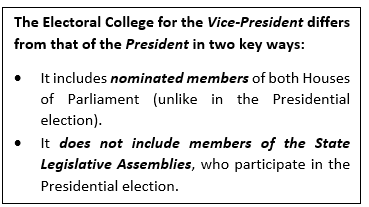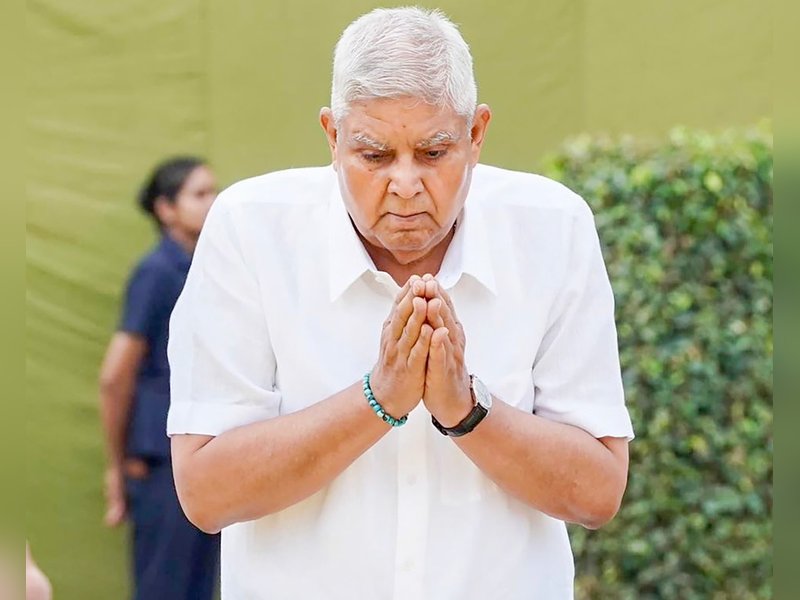SYLLABUS
GS-2: Parliament and State Legislatures – structure, functioning, conduct of business, powers & privileges and issues arising out of these.
Context: Recently, Vice-President Jagdeep Dhankhar resigned from office under Article 67 (a) of the Constitution, and his resignation was accepted by President Droupadi Murmu.
More on the News
- He is only the third Vice-President in India’s history to resign before completing his term, following V.V. Giri and R. Venkataraman.
Both resigned to contest the Presidential elections and were succeeded by Gopal Swarup Pathak and Shankar Dayal Sharma, respectively. - The Constitution does not provide for an acting Vice-President. However, since the Vice-President is also the ex officio Chairman of the Rajya Sabha, the Deputy Chairman, currently Harivansh Narayan Singh, will preside over the House in his absence.
- The Election Commission of India is responsible for announcing the election schedule. The election is conducted under the Presidential and Vice-Presidential Elections Act, 1952.
- As per convention, the Secretary General of either House of Parliament is appointed as the Returning Officer on a rotational basis.
About the Vice-President of India

- Article 63 of the Constitution of India provides that there shall be a Vice-President of India.
- The Vice-President of India is the second highest constitutional authority in the country.
- This office is modelled on the Vice-President of the United States, though its functions are more limited.
Election of the Vice-President:
- The Vice-President is elected indirectly through an Electoral College comprising all members (elected and nominated) of both Houses of Parliament (Lok Sabha and Rajya Sabha).
- The election is conducted using the system of proportional representation by means of the single transferable vote, and voting is done through a secret ballot.
- The procedure is the same as the Presidential election in terms of voting method.
- The nomination process requires 20 MPs as proposers and 20 as seconders, along with a security deposit of ₹15,000.
- The oath of office to the Vice-President is administered by the President or some person appointed on that behalf by him/her.
Qualification:
- Be a citizen of India.
- Have completed 35 years of age.
- Be qualified for election as a member of the Rajya Sabha.
- Not hold any office of profit.
Term of office (Under Article 67):
- The elected Vice-President will serve a full five-year term starting from the date of assuming office, regardless of when the election is held during the vacancy.
- The Vice-President may resign by submitting a letter to the President.
- He can also be removed from office by Resolution of Rajya Sabha passed by special majority and agreed by Lok Sabha (simple majority), 14 days’ notice given.
- The Constitution does not mention any specific grounds for removal.
Vacancy of office:
- If vacancy is due to expiry of term: Election must be held before the current Vice-President’s term ends, to ensure no gap in office.
- If vacancy is due to resignation, removal, death, or disqualification: Election must be held as soon as possible after the vacancy arises.

Source:
https://indianexpress.com/article/explained/what-happens-vice-president-resigns-mid-term-10141171

